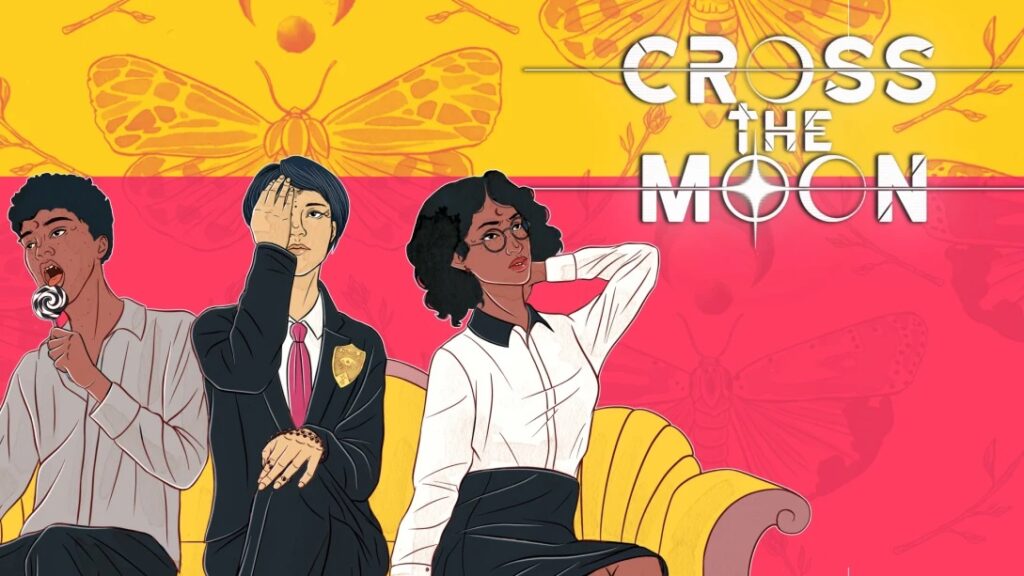
Cross the Moon from Patrick Rainville and publisher Ratalaika Games is an interesting beast. Often, games that come in at a $5 price point are easily dismissible as shovelware, and visual novels doubly so. However, recently, Ratalaika in particular has taken to publishing unique indie VNs that manage to surpass both their price point and expectations, games like The Language of Love (reviewed here) and Angels With Scaly Wings (reviewed here). Cross the Moon is one of those titles and while it has its fair share of little hiccups, it’s an interesting experience nonetheless. Please keep in mind that this is a visual novel written for adults with violence, sexuality, and explicit language.
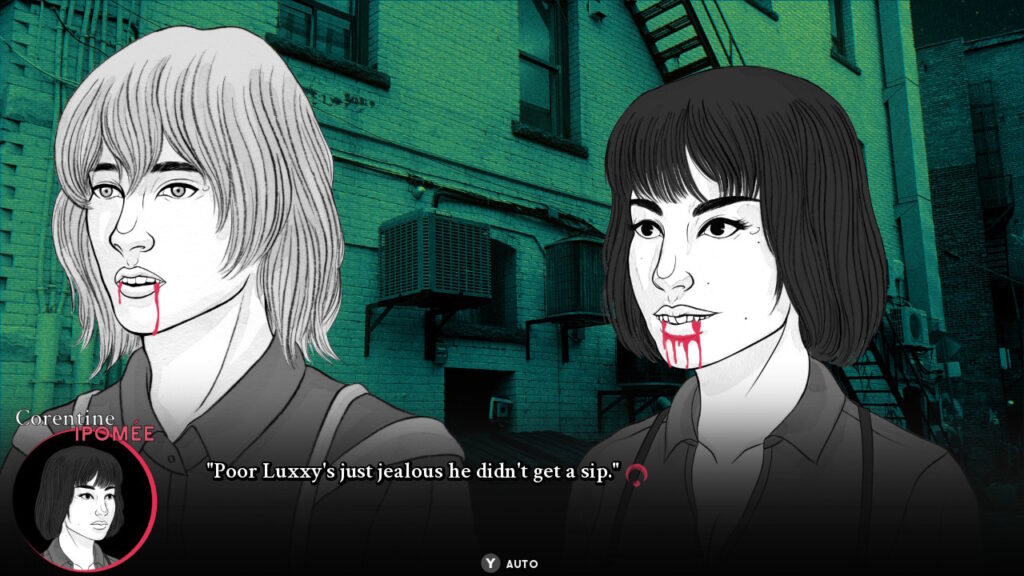
There are vampires. They’re mostly in France, now Armorica, they’re treated as a minority group, and the country has shifted dramatically because of it, changing names and leadership, and cutting itself off from the world. Cross the Moon is really three stories that blend into a well-told mystery surrounding Lux Amanite and his sister Aurore, both on wildly different paths, and a Japanese police inspector in France to learn about the vampiric curse, Inspector Ryouko Otsuki. Between the three, we see three sides of a complex storyline that is filled with nuance, comparisons to our world, and more than a bit of mystery and murder. Cross the Moon lives and dies by its plot, as this is a kinetic visual novel, told entirely in a linear fashion with no selections to make and no gameplay to speak of. You’re simply reading the story of our protagonists and an odd cast of characters that are sometimes unique and sometimes pure tropes. What is missing however are the traditional Japanese VN clichés.
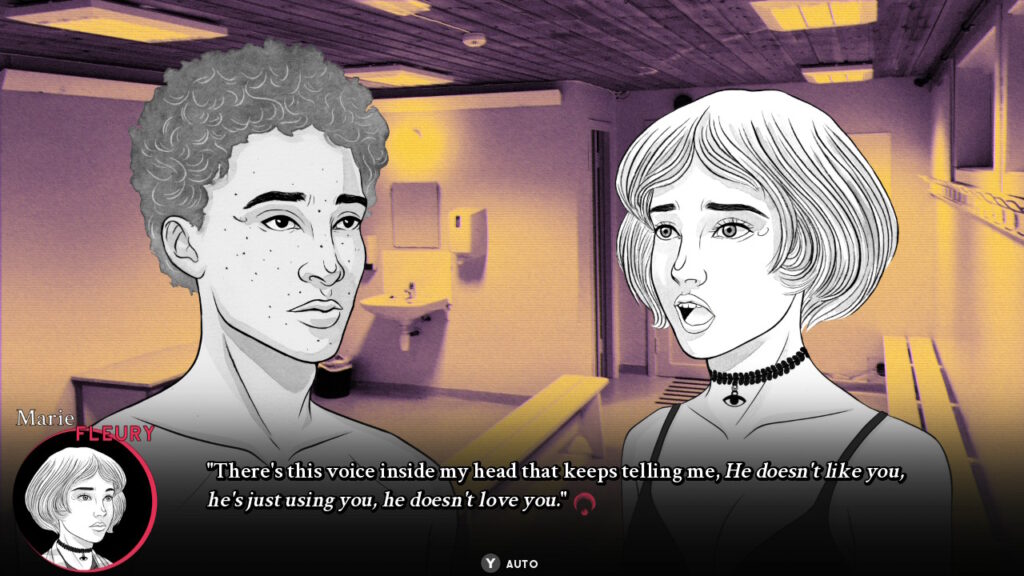
What Cross the Moon does best is take the basic idea of a visual novel and own it. Not only is there no offbeat dating sim, there are no overpowered heroes, no wild adventures. This is more of a literary visual novel than anything else and it defies the genre almost to the point of breaking it, an astonishing feat for a budget VN. The language is adult and realistic, the artstyle could be in an upscale indie graphic novel from Fantagraphics Books, and the entire vibe of Cross the Moon is one of deep introspection and adult storytelling.
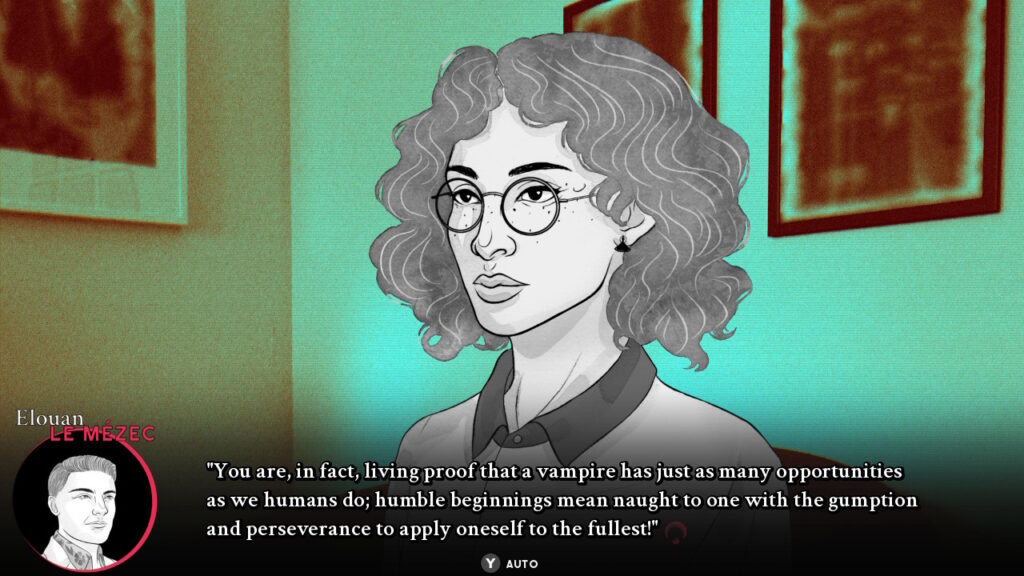
This is a long story too, one that will likely take you a good six to eight hours to read through in its entirety and things don’t exactly get moving right away. The pacing is deliberate, allowing you time to consider what is happening, why, how the politics of Armorica function and the dynamics of vampire society within a human population. It’s a fascinating exercise in world-building that functions well, with commentaries of racism, corporatization, religion, and a host of other ideas, both societal and existential. Pacing is the big issue here though, and the game is definitely a slow burn, so if you’re a slow reader or expecting a lot of action, you may want to look elsewhere. T he first couple hours of the game are pure setup and the entire game is noticeably designed for readers.
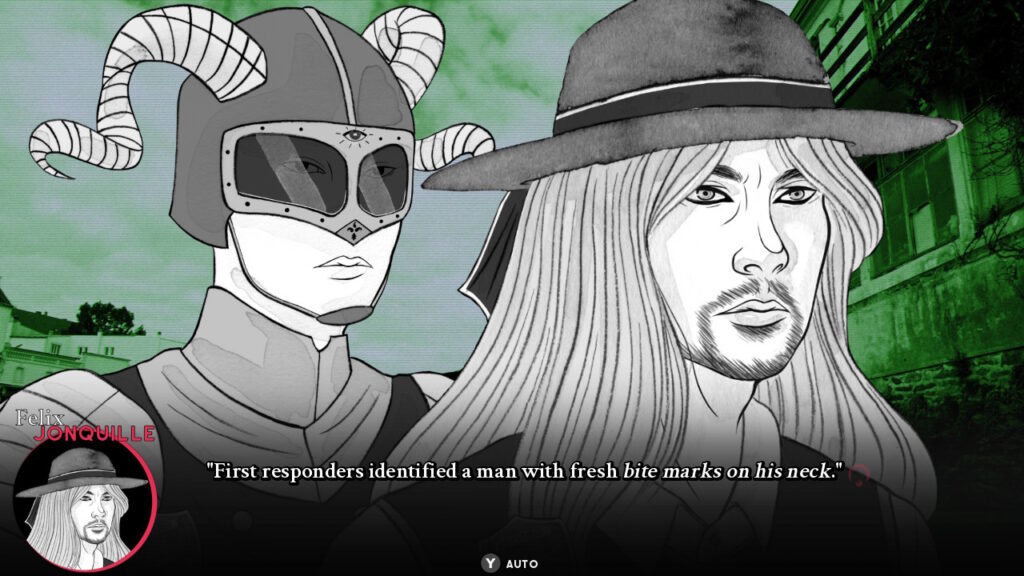
Talking too much about the plot of Cross the Moon would unfortunately ruin it though. Just like discussing the contents of a great novel, going over plot points is rather the purpose of the game itself, so don’t expect any spoilers here! The art style on the other hand, is as unique as it is effective. Real-life photos have been used as backdrops for much of the game, and the character art is untamed and expressive, turning characters into almost meta-representations of their character types. The juxtaposition of photographic work and stylized character works extremely well here and feels quite natural. The photography feels almost like a statement itself and is a welcome and refreshing change in the VN genre. This style might turn a few players off, but from a visual design standpoint, Cross the Moon is both fantastic and unique, setting itself apart from other VNs and indeed, most anything else in gaming.

However, there is one odd design issue that should be pointed out. Lux and Aurore are black. You’d never know it from the screenshots but it is readily apparent in the cover image for the game. It’s also brought up during the course of gameplay and it is weirdly disconcerting. In-game, both siblings are presented without any skin tones due to the visual styles of the game, but this makes them look unabashedly white and referring to racial issues in relation to them can be confusing. Why this particular design choice was made is unclear, but it stands out nonetheless.
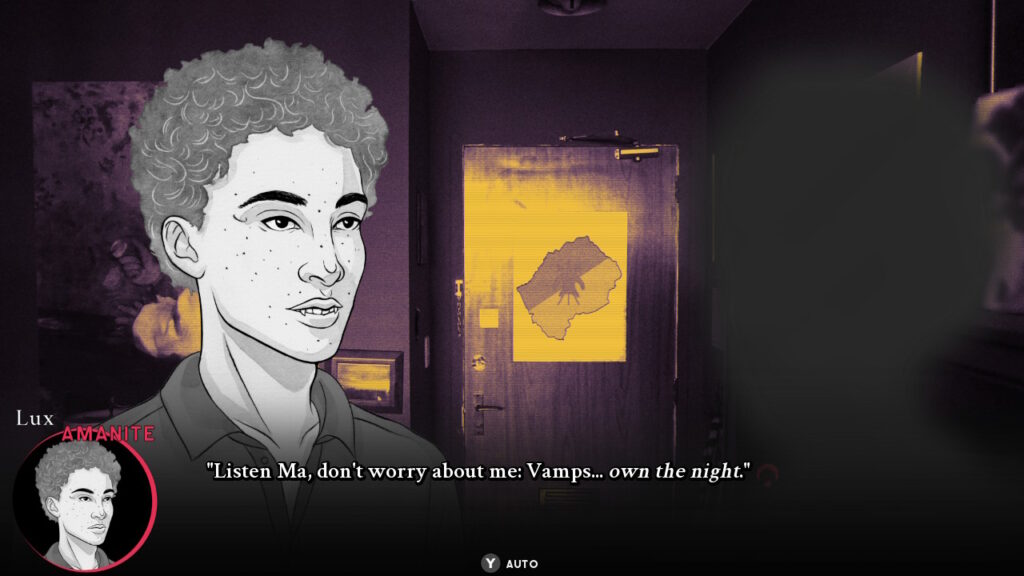
The sound design however, leaves much to be desired. It’s unclear whether this is a Switch issue or a design issue in general, but the sound in Cross the Moon simply cuts out at random intervals. Considering there is literally nothing else happening other than reading, this is a bit of an issue. Music in VNs is designed to augment the experience and suddenly reading in dead silence is disconcerting. Closing the game and reloading it brings back the music in a given sequence, but it will eventually cut out again. It’s unclear whether this is intentional or not, but it’s certainly distracting. In addition, there are places where the sound effects are overused so heavily that it’s simply irritating. When we are introduced to Inspector Otsuki for example, there is a scene with a forensics team taking pictures of the body. The constant shutter noise of the camera never stops for the whole scene and if you are a slow reader that could be a while. It’s simply irritating.
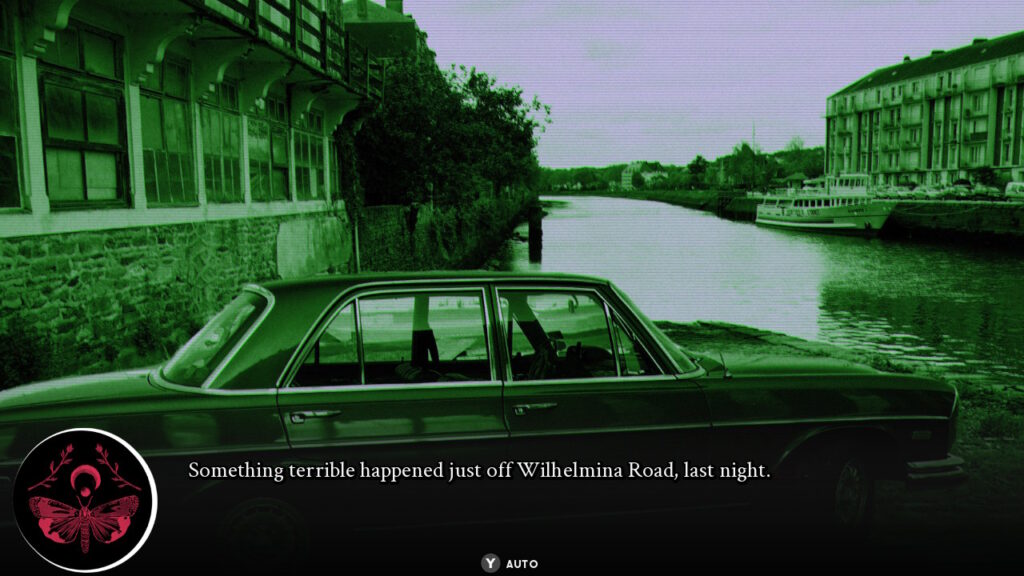
Interface design is another key element in visual novels and in this respect Cross the Moon is a mixed bag. There’s nothing inherently wrong with the interface, it’s just clunky. Touch screens are enabled on the Switch so you can just tap the screen to advance dialogue in undocked mode. This is great and should be mandatory for all published visual novels. But incorporating the history function into the pause menu is a bit irritating. It definitely should have been mapped to one of the many unused buttons on the Switch controller, rather than requiring you to select it from the drop down menu. Additionally, the button mapping in general is weirdly distracting in Cross the Moon for the Switch, as the confirm key is mapped to B and the cancel button is A, leading to confusion. This is likely a conversion issue as the mapping would make sense on an Xbox or PS4, but since the standard button mapping on the Switch is reversed, it’s mildly confusing, especially when you go to save and cancel out repeatedly.
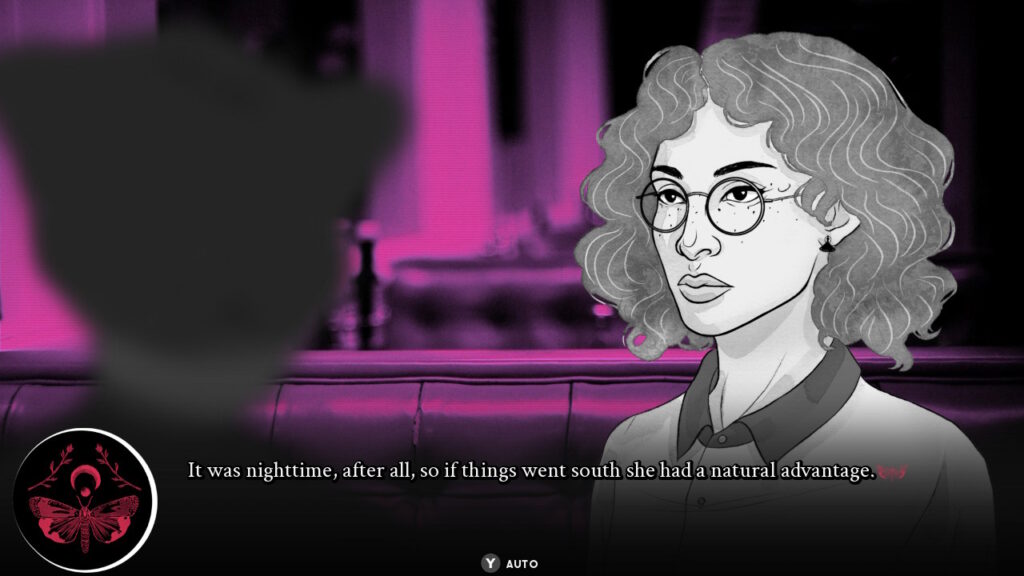
Despite the mapping and sound issues, Cross the Moon manages to be a complex, well-written visual novel that slowly pulls the reader into the world of Armorica and our three protagonists. While the writing isn’t perfect and some characters are delightfully compelling, there are others that irritate and could use complete rewrites to better fit the flavor of the text. On the whole however, Cross the Moon is an excellent story that borders on literature and is well worth reading through, even if it might take you a few days to get there. At only $5, it’s not like you’re out a lot of cash, and you’re getting a thorough and deep vampire story that’s unique in many ways. Patrick Rainville has done an excellent job putting Cross the Moon together and if you’re intrigued by vampire stories, you owe it to yourself to check this one out!
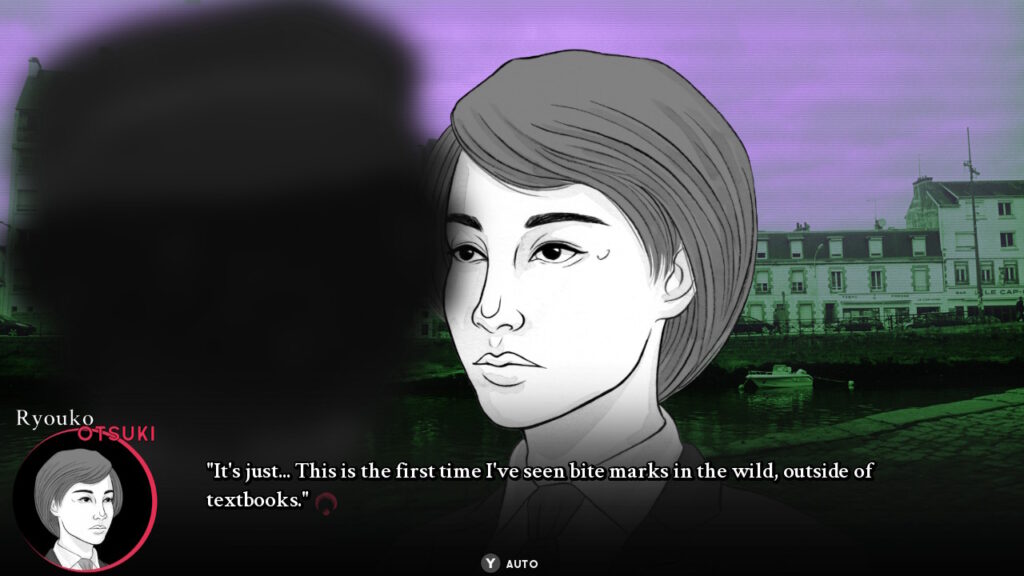
This review is based on a digital copy of Cross the Moon provided by the publisher. It was played on a Nintendo Switch in both docked and undocked modes and was excellent in both. Cross the Moon is also available for the Playstation 4, Xbox One, and PC on Steam. All screenshots are from actual gameplay.


